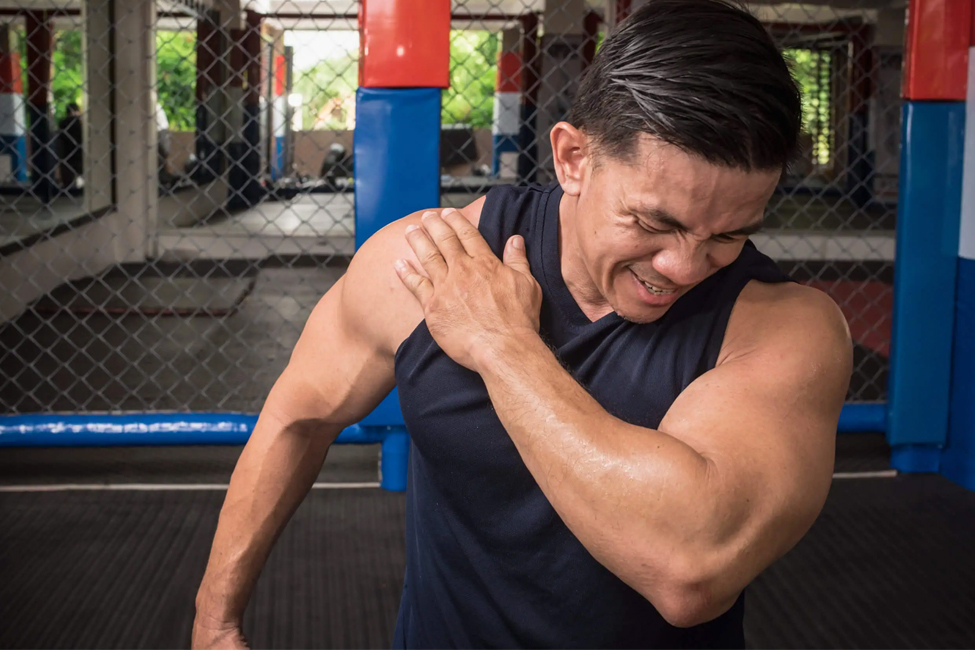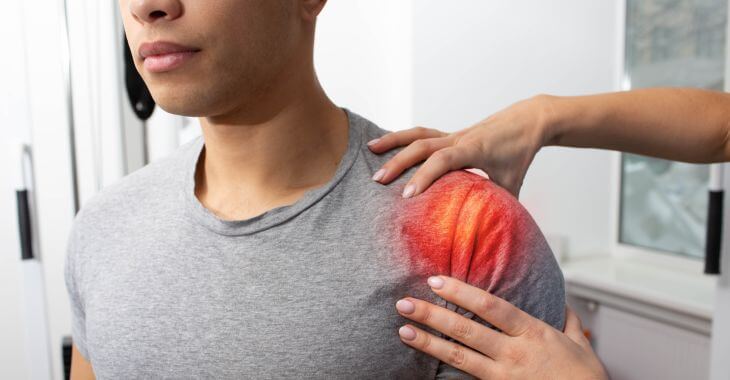Shoulder Instability / Dislocation: Causes, Symptoms, Treatment, and Prevention
What is Shoulder Instability / Dislocation?
Shoulder instability, often associated with shoulder dislocation, disrupts the shoulder joint’s normal alignment, making it more prone to slipping out of place. A shoulder dislocation occurs when the upper arm bone (humerus) partially or completely comes out of the shoulder socket. This can lead to pain, weakness, and recurring episodes of instability.
Type of Shoulder Instability / Dislocation
Shoulder instability can be classified into several types, including:
- Traumatic Dislocation: This is typically caused by a sudden injury or impact that forces the humerus out of the socket.
- Atraumatic or Multidirectional Instability: This type may result from underlying issues like ligament laxity, muscle imbalance, or connective tissue disorders, making the shoulder prone to instability without a specific injury.
- Recurrent Dislocation: Some individuals may experience repeated episodes of shoulder dislocation after the initial dislocation.
How Common is Shoulder Instability/ Dislocation?
Shoulder instability and dislocation are relatively common, especially among young individuals and athletes involved in sports that put stress on the shoulder joint. Traumatic dislocation is often the result of sports injuries or accidents. The frequency of atraumatic or recurrent instability varies, but it can affect individuals of various ages.
Causes of Shoulder Instability / Dislocation
Shoulder instability and dislocation can occur due to several causes, including:
- Trauma: A sudden and forceful impact or injury to the shoulder, such as a fall or collision, can lead to traumatic shoulder dislocation.
- Loose Ligaments: Some individuals have naturally loose ligaments or connective tissues, making them more prone to shoulder instability without a specific injury.
- Muscle Imbalance: Muscle weaknesses or imbalances around the shoulder joint can increase the risk of instability.
- Overuse or Repetitive Strain: Overuse or repetitive motions in activities or sports that involve the shoulder can lead to instability over time.
- Previous Dislocations: A history of previous shoulder dislocations can increase the likelihood of recurrent episodes.
Symptoms of Shoulder Instability / Dislocation
If you have shoulder instability or have experienced a shoulder dislocation, you may notice the following symptoms:
- Pain: Significant pain, especially during and after a dislocation event.
- Weakness: Feeling of weakness or instability in the affected shoulder, making lifting or using the arm difficult.
- Limited Range of Motion: Reduced ability to move the shoulder through its normal range, especially overhead or behind the back.
- Popping or Catching Sensation: Some individuals may feel or hear popping, grinding, or catching sensations when moving the shoulder.
- Recurrent Episodes: If you’ve experienced one dislocation, you may be at risk for repeated episodes of instability.
- Swelling and Bruising: You may notice swelling and bruising around the shoulder joint after a dislocation.
Diagnosis of Shoulder Instability / Dislocation
Diagnosing shoulder instability and dislocation typically involves the following steps:
Medical History
Your orthopaedic specialist will ask about your symptoms, previous shoulder injuries, and the circumstances surrounding your shoulder instability or dislocation.
Physical Examination
The doctor will perform a physical examination, assessing your shoulder’s range of motion, strength, and stability and checking for signs of instability.
Imaging Tests
X-rays or other imaging tests may be ordered to visualise the shoulder joint’s alignment and look for fractures or dislocations.
MRI or CT Scan
In some cases, more detailed imaging, such as an MRI or CT scan, may be necessary to assess soft tissue damage or structural abnormalities.
Complications of Shoulder Instability / Dislocation
Shoulder instability and dislocation can lead to several complications, including:
- Chronic Pain: Recurrent shoulder instability or dislocation may result in persistent pain, affecting your daily life.
- Muscle Weakness: Repeated episodes of instability can lead to muscle weakness in the shoulder, reducing strength and functionality.
- Inflammation and Tendon Damage: Recurrent dislocations can cause inflammation and damage to the shoulder tendons.
- Nerve or Blood Vessel Injury: There’s a risk of damaging nerves or blood vessels around the shoulder joint in severe dislocations.
- Loss of Range of Motion: Over time, recurrent instability can lead to a significant loss of shoulder range of motion.
- Impact on Daily Activities: Complications can affect your ability to perform everyday tasks, work, or engage in sports and recreational activities.
Treatment Options for Shoulder Instability / Dislocation
Managing shoulder instability and dislocation may involve various treatment options, including:
Immobilisation
After a dislocation, the shoulder may be immobilised in a sling or brace to allow healing.
Reduction
An orthopaedic specialist may gently manipulate the dislocated shoulder back into place.
Rehabilitation
Physical therapy exercises can help strengthen the shoulder muscles, improve stability, and prevent future dislocations.
Medications
Pain relievers and anti-inflammatory drugs may be prescribed to manage pain and inflammation.
Surgical Intervention
Surgery may sometimes be necessary to repair damaged tissues or address the underlying causes of instability.
Preventing Shoulder Instability / Dislocation
While it may not always be possible to prevent shoulder instability or dislocation completely, you can take steps to reduce the risk:
- Regularly perform exercises to strengthen the shoulder muscles, which can help improve stability and reduce the risk of dislocation.
- Activities that enhance balance and coordination can contribute to better joint stability.
- Wear appropriate protective gear, such as shoulder pads or braces, when participating in sports or activities with a risk of falls or impacts.
- Use proper techniques when lifting, throwing, or engaging in physical activities that involve the shoulder.
- If you’ve had a previous dislocation, complete any recommended rehabilitation and follow-up care to prevent recurrent instability.
Living with Shoulder Instability / Dislocation
Living with shoulder instability or a history of dislocation may involve the following strategies:
- Use regular rehabilitation exercises prescribed by your orthopaedic specialist to strengthen the shoulder muscles and improve stability.
- Be mindful of activities that may increase the risk of shoulder dislocation, and consider using protective gear or taping for added stability.
- If necessary, adhere to your orthopaedic specialist’s recommendations regarding activity modification, lifestyle changes, or surgery.
- Maintain scheduled follow-up appointments to monitor your shoulder’s condition and make any necessary adjustments to your treatment plan.
- If you experience pain or discomfort, discuss pain management options with your orthopaedic specialist to maintain your quality of life.
Shoulder instability and dislocation are common conditions that can significantly impact your shoulder’s stability and function. If you suspect or have experienced these issues, seeking professional advice and timely intervention is crucial for a better quality of life.
We encourage you to request an appointment with The Orthopaedic Practice and Surgery Clinic for expert care and consultation regarding shoulder instability or dislocation. Their specialised team can provide personalised treatment and guidance, helping you regain stability, alleviate pain, and improve your overall shoulder health. Don’t wait—take the first step toward a more stable and pain-free shoulder by requesting your appointment today.







